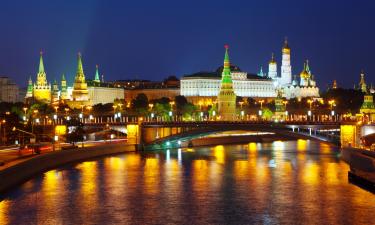Northern sea baffles archaeologists
 Remains of an ancient civilization discovered in the depths of the Northern sea
Remains of an ancient civilization discovered in the depths of the Northern sea
While some scientists spend all their time and efforts in search of Atlantis, others have already discovered remains of an ancient civilization that had existed on the same territory as present-day Northern sea. With the help of modern technology, archaeologists were able to get a better glimpse of the ancient world.
Approximately 10 000 years ago the entire bottom of the Northern sea had been a blossoming valley, inhabited by ancestors of modern-day Europeans. Scientists from the Birmingham University were able to reach such conclusion after reconstructing local landscape by means of computers. Archaeologists analyzed data of earth's crust's fluctuations and using a specially designed program managed to come up with a 3D image of the area. The region connects today's British Isles with continental Europe.
The science of anthroposophia is among a few that sincerely believes in the existence of Atlantis, which used to occupy a gigantic territory—from Americas to modern Near East. Tectonic movements, earthquakes and volcano eruptions have split the continent. The major portion of it has sunken. Modern-day British Isles (Great Britain, Ireland, Scotland), Iceland, Canaries, Cabo-Verde (islands of the Green cape) as well as several islands of the Caribbean are considered to be Atlantis' remains.
According to this hypothesis, the very first cataclysms began affecting Atlantis about 800 000 years ago. Some scientists assume that this event has been portrayed in the Biblical story of the Great Flood. Other major shifts took place nearly 200 000 years ago, leaving only miserable fragments of the mighty kingdom of its inhabitants. The civilization has been almost totally destructed about 80 000 years ago. Ancient Greek philosopher Plato describes the fall of Atlantis as the collapse of the legendary island of Poseidonis, which had been consumed by waters in 9564 BC, when volcano eruptions along with powerful earthquakes had destroyed the last stronghold of the island.
Soon after the first cataclysms started to occur, Atlantes moved to the North-East populating territories of today’s Great Britain and Scandinavia (which used to be connected at the time). British archaeologists managed to reconstruct this particular region. The entire valley used to be divided by a 600 meter wide river. When northern glaciers began to melt (as a result of another shift of the equator's axis) waters completely flooded the valley.
“This is an amazing virtual project, which allows us to look closer at the past,” says Bob Stone, member of the team of archaeologists. “Archaeologists, historians along with other specialists help us to get the most precise picture of the area. We use special data of seismic activity and tectonic movements in the area.” Soil samples have already been extracted from the depths of the sea. Scientists discovered traces of fossilized remains of flora and fauna.
Grigory Donskov,
“Saratovskie Vesti”
Subscribe to Pravda.Ru Telegram channel, Facebook, RSS!





